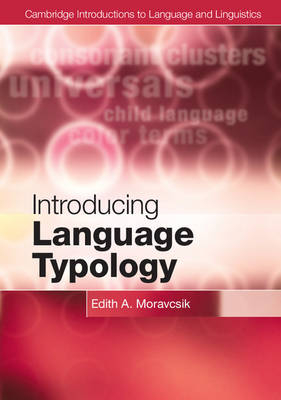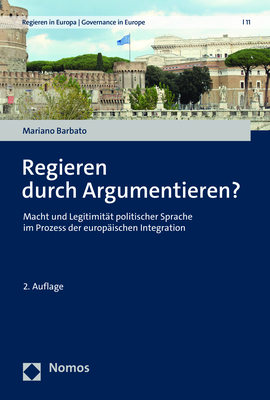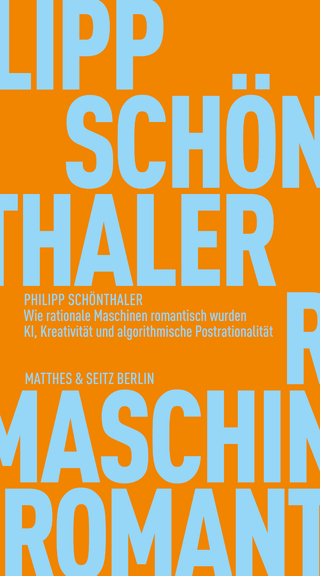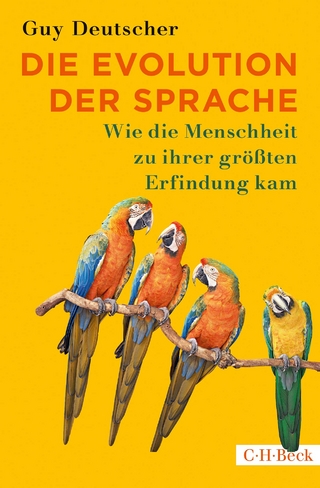
Introducing Language Typology
Seiten
2012
Cambridge University Press (Verlag)
978-0-521-15262-4 (ISBN)
Cambridge University Press (Verlag)
978-0-521-15262-4 (ISBN)
- Lieferbar (Termin unbekannt)
- Versandkostenfrei innerhalb Deutschlands
- Auch auf Rechnung
- Verfügbarkeit in der Filiale vor Ort prüfen
- Artikel merken
Language typology identifies similarities and differences between languages of the world. This textbook provides an introduction to the subject which assumes minimal prior knowledge of linguistics. It offers the broadest coverage of any introductory book, with sections on historical change, language acquisition and language processing.
Language typology identifies similarities and differences among languages of the world. This textbook provides an introduction to the subject which assumes minimal prior knowledge of linguistics. It offers the broadest coverage of any introductory book, including sections on historical change, language acquisition, and language processing. Students will become familiar with the subject by working through numerous examples of crosslinguistic generalizations and diversity in syntax, morphology, and phonology, as well as vocabulary, writing systems, and signed languages. Chapter outlines and summaries, key words, a glossary, and copious literature references help the reader understand and internalize what they have read, while activities at the end of each chapter reinforce key points.
Language typology identifies similarities and differences among languages of the world. This textbook provides an introduction to the subject which assumes minimal prior knowledge of linguistics. It offers the broadest coverage of any introductory book, including sections on historical change, language acquisition, and language processing. Students will become familiar with the subject by working through numerous examples of crosslinguistic generalizations and diversity in syntax, morphology, and phonology, as well as vocabulary, writing systems, and signed languages. Chapter outlines and summaries, key words, a glossary, and copious literature references help the reader understand and internalize what they have read, while activities at the end of each chapter reinforce key points.
Edith A. Moravcsik is Professor Emerita in the Department of Linguistics at the University of Wisconsin, Milwaukee.
1. What is language typology?; 2. The worlds of words; 3. Assembling words; 4. Dissembling words; 5. The sounds of languages; 6. Language in flux; 7. Explaining crosslinguistic preferences.
| Reihe/Serie | Cambridge Introductions to Language and Linguistics |
|---|---|
| Zusatzinfo | Worked examples or Exercises; 2 Halftones, unspecified; 9 Line drawings, unspecified |
| Verlagsort | Cambridge |
| Sprache | englisch |
| Maße | 173 x 245 mm |
| Gewicht | 640 g |
| Themenwelt | Geisteswissenschaften ► Philosophie ► Sprachphilosophie |
| Geisteswissenschaften ► Sprach- / Literaturwissenschaft ► Sprachwissenschaft | |
| ISBN-10 | 0-521-15262-3 / 0521152623 |
| ISBN-13 | 978-0-521-15262-4 / 9780521152624 |
| Zustand | Neuware |
| Haben Sie eine Frage zum Produkt? |
Mehr entdecken
aus dem Bereich
aus dem Bereich
Macht und Legitimität politischer Sprache im Prozess der europäischen …
Buch | Softcover (2023)
Nomos (Verlag)
74,00 €
KI, Kreativität und algorithmische Postrationalität
Buch | Softcover (2024)
Matthes & Seitz Berlin (Verlag)
16,00 €
Wie die Menschheit zu ihrer größten Erfindung kam
Buch | Softcover (2022)
C.H.Beck (Verlag)
18,00 €


